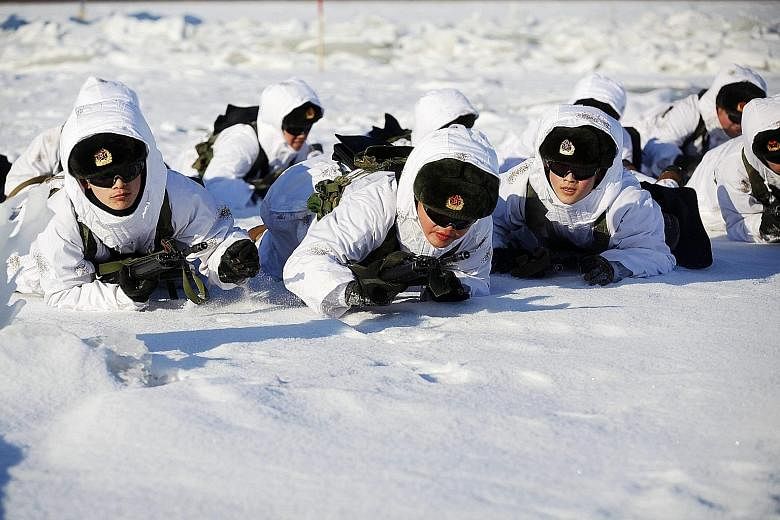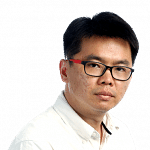BEIJING • China's military reforms, if successfully implemented by 2020, will usher in an entirely different command structure for the People's Liberation Army (PLA).
First, the powerful Central Military Commission (CMC), which controls the PLA and is chaired by President Xi Jinping, is set to gain more powers.
According to media reports, the PLA's "four headquarters" - which oversee staff, political work, logistics and armaments - will be dissolved, with their work distributed among six new departments. Observers say the move is aimed at preventing any of the departments from becoming too powerful, like the four headquarters were for a decade till 2012 under the control of disgraced CMC vice-chairmen Xu Caihou and Guo Boxiong.
Both reportedly ruled the PLA with little regard for CMC chair Hu Jintao from 2004 to 2012, and also for Mr Xi as their fellow CMC vice-chair from 2007 to 2012. Both Xu and Guo have been investigated since their 2012 retirement for disciplinary violations.
The powers of China's military regions will also be reduced to prevent regional commanders from posing a threat to the CMC, say observers. The existing seven military regions are set to be reorganised into five combat zones and will focus solely on preparing for battles, ceding their administrative powers to the newly-set-up army unit.
China last week transformed the army-centric structure by setting up a new general command for the army, which is now one of four armed services alongside the navy, the air force and the Rocket Force, which will oversee China's nuclear arsenal and space-related warfare.
Another key change is the setting up of three commissions - disciplinary, political and legal affairs, and technology - which will report directly to the CMC to give them more power and autonomy.
The CMC will also assume leadership of the People's Armed Police, a paramilitary outfit that takes part in civilian policing and fire rescue duties, and provides support to the PLA during wartime.
The paramilitary unit now sits in a grey area of command shared between the CMC and the State Council through the Ministry of Public Security. But as the ministry also comes under the Communist Party's political and legal affairs commission, the overlapping chain of command has led to disputes over the deployment of the paramilitary police in recent years.
Another consideration is the need to prevent the paramilitary police from becoming a potential political tool, like it did as part of the massive security apparatus under disgraced Politburo Standing Committee member Zhou Yongkang for a decade till 2012.
"The overriding goal is to further empower the CMC and, in turn, enhance Xi Jinping's control over the military, as he is unsure whether the commanders are truly loyal to him," Beijing-based military commentator Wu Ge told The Straits Times.
But some observers say the military restructuring is aimed more at modernising the PLA and improving its efficiency in various battle scenarios. For instance, one of the six new departments is in the form of a US-style joint chief of staff command, which will provide advice to the CMC on personnel deployment and battle strategies. Likely to comprise the deputy commanders or political commissars of various armed services, this department is touted to improve coordination among them. Also, unlike the military regions long headed by only army generals, some of the strategic zones, especially those located along the coast, are likely to be headed by navy or air force commanders as they can better cope with aerial and maritime defence threats. In the same vein, more naval and air force commanders could take up posts in the CMC.
Among the 10 generals in the CMC, seven are army personnel while two are from the air force - Gen Xu Qiliang and Gen Ma Xiaotian - and one from the navy, Admiral Wu Shengli.
Shanghai-based military expert Ni Lexiong said diluting the army's dominance in the PLA is an inevitable change as the ai r force and navy play an increasingly important role in today's wars.
"That's why many top generals in the US military come from the navy or air force. China has to give more top posts to navy and air force commanders too to be a modern military," he told The Straits Times.


